good mechanical process engineer must be a good processing equipment application engineer. He has a very accurate and full understanding of the types, processing application scope, structural characteristics and processing accuracy of various processing equipment in the machinery industry. At the same time, he can also actually combine the specific conditions of his company’s equipment, Make reasonable equipment layout and arrangement for various processing parts and processes, understand their processing advantages and disadvantages, and be able to make good use of their strengths and avoid weaknesses to coordinate the company’s machining work.
Now, we will make a general analysis and understanding of several commonly used processing equipment in the machining industry, so that we can have a relatively clear and clear definition of the processing equipment in this industry from the perceptual point of view. At the same time, we can also make a certain analysis of various processing equipment from the theoretical point of view, so that we can better combine practice in our future work, So as to further guide our work and help our work.
Our introduction focuses on the most common machining equipment in the machining industry, such as turning, milling, planing, grinding, boring, drilling, wire cutting and so on. We further elaborate on the type, scope of application, structural characteristics and machining accuracy of these machining equipment. Let’s move on to the main topic below.
1.Lathe![Are You Familiar with These Various Machining Methods? 2 Are You Familiar with These Various Machining Methods? 2]()
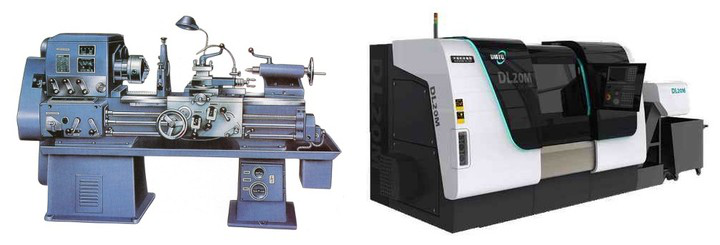
(1) Type of lathe
There are many types of lathes. According to the statistics of a machinist’s manual, there are 77 kinds. The typical categories are: instrument lathes, single axle automatic lathes, multi axle automatic or semi-automatic lathes, return wheel or turret lathes, crankshaft and camshaft lathes, vertical lathes, landing and horizontal lathes, profiling and multi tool lathes, axle roller spindles and tooth shoveling lathes, etc, This is divided into many small categories, and the number varies. Vertical lathes and horizontal lathes are commonly used in our machinery industry. These two lathes can be seen in almost all places with machining.
(2) Machining scope of lathe
We mainly select several typical types of lathes to introduce the application scope of machining.
A. The horizontal lathe can be used for turning internal and external cylindrical surfaces, conical surfaces, formed rotating surfaces and annular grooves, turning sections and various threads, and can be used for drilling, reaming, reaming, tapping, threading and knurling. Although the ordinary horizontal lathe has a low degree of automation and more auxiliary time in the processing process, because of its wide processing range and good general performance, this type of machine tool has been widely used and popularized in the machining industry. It is one of the typical processing equipment in our machinery industry, It is also one of the indispensable processing equipment in the machining industry.
B. The vertical lathe is applicable to the processing of various frame and shell parts, as well as the processing of internal and external cylindrical surfaces, conical surfaces, end faces, grooves, cutting, drilling, expanding and reaming of various parts. With the help of additional devices, it can also realize the processing processes such as thread turning, end face turning, profiling, milling and grinding.
(3) Machining accuracy of lathe
A. The machining accuracy of the general horizontal lathe is as follows:
Roundness: 0.015mm; Cylindricity: 0.02/150mm; Flatness 0.02 / ¢ 150mm; Surface roughness: 1.6ra/ μ m。
B. The machining accuracy of vertical lathe is as follows:
Roundness: 0.02mm; Cylindricity: 0.01mm; Flatness 0.03mm.
The above machining accuracy is only a relative reference value, which does not mean that all lathes meet the requirements. Many lathe equipment have a certain up and down floating amount according to the specific requirements of the manufacturer and the specific assembly conditions. However, no matter how large the floating amount is, its machining accuracy value must meet the requirements of the national standard for this kind of equipment. When purchasing this kind of equipment, If the machining accuracy does not meet the requirements of the national standard, the purchaser has the right to refuse acceptance and payment.
2. Milling machine
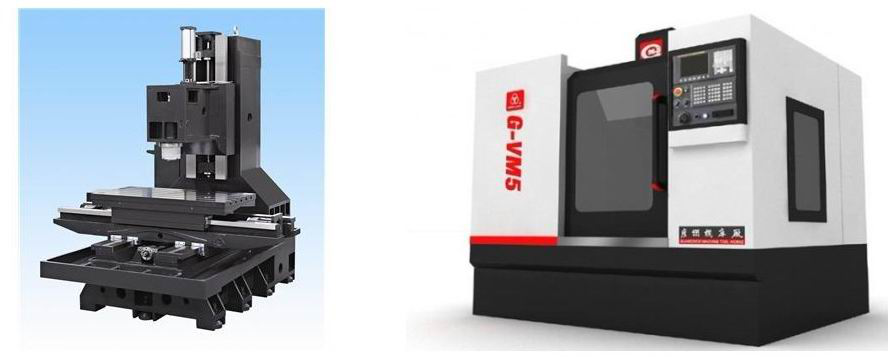
(1) Type of milling machine
The types of milling machines are also complex and diverse. According to the statistics of a machinist manual, there are more than 70 types. The typical types are: instrument milling machine, cantilever and sliding pillow milling machine, gantry milling machine, plane milling machine, profiling milling machine, vertical lifting milling machine, horizontal lifting table milling machine, bed milling machine, tool milling machine, etc., which are divided into many small categories, with different quantities, In our machinery industry, vertical machining center and gantry machining center are commonly used. Almost all the machining places can see these two types of milling machines. We also give a general introduction and analysis for these two typical milling machines.
(2) The applicable range of milling machine
Because there are too many kinds and structures of milling machines and the wide range of application, we give a brief introduction to the two typical milling machines, which are the most commonly used vertical machining center and gantry machining center.
A. Vertical machining center (as shown in the figure above), which is actually a vertical CNC milling machine with tool base, is mainly characterized by the use of multi-edged rotary tools for cutting, which can be used for machining plane, groove, gear dividing parts, spiral surface and various surfaces. Especially with the application of numerical control technology, the processing scope of this type of machine tool has also been greatly improved, Besides various milling operations, it can also drill, boring, ream and tap thread of workpiece, which has a wide practical and universal significance.
B. Gantry machining center, compared with vertical machining center, is a composite application of CNC gantry milling machine tool adding library. In the processing scope, gantry machining center has almost all processing capabilities of ordinary vertical machining center, and can adapt to the processing of larger tools in terms of the overall dimension of parts, At the same time, it has great advantages in processing efficiency and precision, especially the practical application of five axis linkage gantry machining center, its processing scope has also been greatly improved, which lays the foundation for the development of China’s manufacturing industry to the direction of high precision.
(3) Machining accuracy of milling machine:
A. Vertical machining center:
Flatness: 0.025/300mm; Roughness: 1.6ra/ μ m。
B. Gantry processing center:
Flatness: 0.025/300mm; Roughness: 2.5ra/ μ m。
The above machining accuracy is only a relative reference value, which does not mean that all milling machines meet the requirements. Many milling machine equipment have a certain amount of up and down floating according to the specific requirements of the manufacturer and the specific assembly conditions. However, no matter how large the floating amount is, the processing accuracy value must meet the requirements of national standards for such equipment, if the equipment is purchased, If the machining accuracy does not meet the requirements of the national standard, the purchaser has the right to refuse acceptance and payment.
3.Planer![Are You Familiar with These Various Machining Methods? 5 Are You Familiar with These Various Machining Methods? 5]()
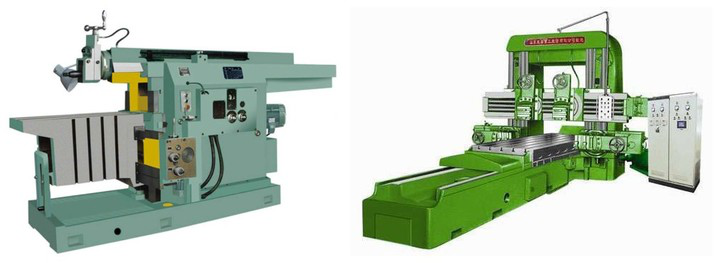
(1) Type of planer
Compared with lathes and milling machines, there are many fewer types of planers. Similarly, according to the statistics of the machinist’s manual, there are about 21 types. The typical types are: cantilever planer, gantry planer, shaper, edge and die planer, etc. these categories are divided into many small types of planer products, and we have the highest utilization rate in the machinery industry, The most popular planers should be shapers and planers. As shown in the figure above, we will make a basic analysis and introduction for these two typical planers.
(2) Application scope of planer
The planing motion of the planer is mainly the periodic back and forth linear motion relative to the processed workpiece. Its applicable planing part features are mostly the processing of plane, inclined plane and concave convex surface, and can also be planed for various curved surfaces. However, due to the limitations of its own processing characteristics, the processing and planing speed is not too high, and the planer with return stroke does not participate in the processing and cutting of parts, Therefore, the empty stroke loss is caused, and the processing efficiency is relatively low.
At the same time, with the great technological improvement of NC and automation of other processing equipment, the planing processing method has been gradually replaced. From the upgrading trend of many equipment, this type of processing machine tool has not been greatly upgraded and innovated, and still stays in the original structure and layout to a great extent, In particular, the vigorous development of vertical machining center and gantry machining center, as well as the continuous innovation of machining tools, have greatly replaced the machining advantages of planer in terms of machining range, making this kind of equipment with relatively low machining efficiency in a very embarrassing situation.
(3) Machining accuracy of planer
The planing accuracy can generally reach the it10-it7 accuracy level, especially for the machining of long guide rail surface of some large machine tools, it can even replace grinding, which is the so-called “precision planing instead of precision grinding”.
4.Grinding machine![Are You Familiar with These Various Machining Methods? 7 Are You Familiar with These Various Machining Methods? 7]()
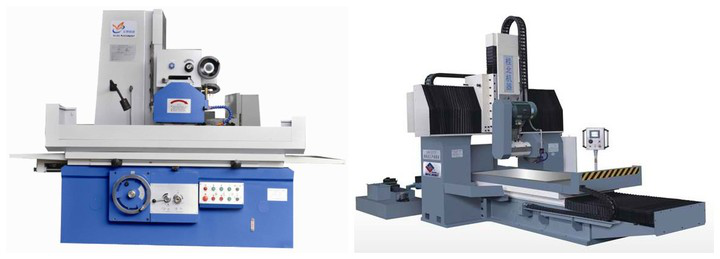
(1) Type of grinder
Compared with the processing equipment of the previous models, there are many kinds of grinding machines. According to the statistics of a machining technologist’s manual, there are about 194 kinds, which can be divided into: instrument grinder, cylindrical grinder, internal grinder, grinder, coordinate grinder, guide rail grinder, tool edge grinder, plane and end face grinder, crankshaft camshaft spline and roll grinder Tool grinder, superfinishing machine, inner circle honing machine, outer circle and other honing machines, polishing machine, abrasive belt polishing and grinding machine. There are too many types of machine tools, such as grinding machine tools, piston ring grinding machines, roller grinding machines, ball grinding machines and grinding rings for grinding pistons, valves, rollers, etc, Moreover, many grinding machines are some specific equipment in specific industries, so we make a basic introduction to the grinding machines commonly used in the machinery industry. In this article, we mainly choose cylindrical grinding machines and surface grinding machines for a brief description.
(2) Application scope of grinding machine
A. Cylindrical grinder and cylindrical grinder are mainly used to process the outer surface and shoulder end face of cylindrical surface, conical surface or other rotating body. Because of their good processing adaptability and processing accuracy, they are widely used in the processing of some high-precision parts in machining, especially in the final finishing process of these parts, It can not only ensure the geometric size of machined parts to the greatest extent, but also meet the requirements of good surface finish. Therefore, it is one of the indispensable equipment in machining process.
B. The surface grinder is mainly used to process the surface of plane, step surface, side and other parts. It is also widely used in the machinery industry. Especially in the processing of some high-precision parts, the grinder is almost the only choice to ensure the machining accuracy. Therefore, the use of surface grinder is a compulsory course for most grinding operators, Even in some equipment assembly industries, the use of surface grinder is also the standard skill of assembly personnel, because the grinding of various adjustment pads in the assembly process depends on surface grinder.
(3) Machining accuracy of grinding machine
A. Machining accuracy of cylindrical grinder:
Roundness and cylindricity: 0.003mm; Surface roughness: 0.32ra/ μ m。
B. Machining accuracy of surface grinder:
Parallelism: 0.01/300mm; Surface roughness: 0.8ra/ μ m。
From the above machining accuracy, we can also clearly see that compared with the previous lathes, milling machines, planers and other processing equipment, grinders can achieve higher behavior tolerance accuracy and surface roughness. Therefore, grinders are widely and widely used in the finishing processes of many parts.
5. Boring machine![Are You Familiar with These Various Machining Methods? 9 Are You Familiar with These Various Machining Methods? 9]()
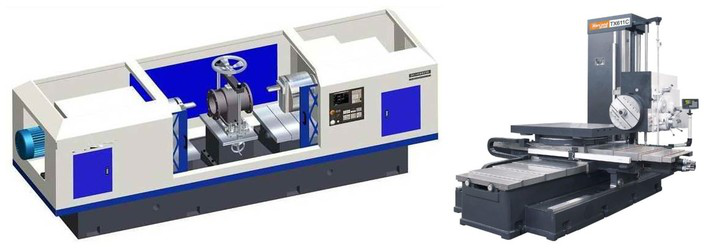
(1) Boring machine type
Compared with the previous types of processing equipment, boring machine is also a relatively small number of processing equipment. According to the statistics of a machinist manual, there are about 23 kinds. It can be divided into the following categories: deep hole boring machine, coordinate boring machine, vertical boring machine, horizontal milling boring machine, precision boring machine, boring machine for tractor repair, etc, Among them, the most common and common boring machine in our machinery industry should fly coordinate boring machine. Below we also make a brief introduction and Analysis on some characteristics of coordinate boring machine.
(2) Applicable range of boring machine
There are many types of boring machines. We will give a brief introduction to coordinate boring machines. We can learn other types of boring machine knowledge according to this. Coordinate boring machine is a precision machine with precise coordinate positioning device, mainly used for boring the hole system with high requirements of dimension, shape and position precision. It can be used for drilling, reaming, reaming, end face, cutting groove Milling surface can also be used for coordinate measurement, precision scale and marking, and has a very wide and reliable processing characteristics.
But with the development of CNC technology, especially the development of CNC vertical milling machine and NC horizontal milling machine, boring machine, once the dominant machine in hole system processing equipment, has the risk of being replaced gradually. Of course, it has an irreplaceable objective side. However, the extinction or development of any equipment is a progress for the machining industry, It is the progress of technology, the progress of technology, and the progress of our country’s manufacturing industry.
(3) Machining accuracy of boring machine
The aperture precision of coordinate boring machine is it6-7, and the surface roughness is 0.4-0.8ra/ μ m。
But boring machine processing has a very bad place, especially when processing cast iron parts, it is called a dirty ah, a white faced young student goes in, a zhangfei Li Kui jumps out, there is a boring machine, a sense of non-existent, so based on such a practical reason of processing link, the possibility of this equipment will be replaced in the future is also increasing, Because who doesn’t care about their face? As soon as possible, many people don’t, but we need to pretend we have a lot of appearance.
6.Drilling machine
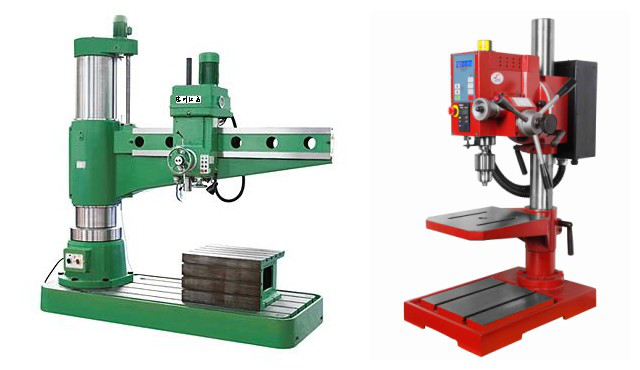
(1) Type of drilling machine
This is the most widely used processing equipment in the machinery industry. If it is a machining factory, it will basically have one. If you don’t even have this processing equipment, you are embarrassed to say that you are dry processing. According to the statistics of a machining technologist’s manual, there are about 38 kinds, which can be divided into the following categories: coordinate boring and drilling machine, deep hole drilling machine, rocker drilling machine Table drilling machine, vertical drilling machine, horizontal drilling machine, milling drilling machine, center hole drilling machine, etc. the most common one we use in the machinery industry is the radial drilling machine, which is only the standard configuration of our machinery processing industry. Without this equipment, you basically can’t do this industry. That’s why we’ll focus on introducing this kind of drilling machine next.
(2) Machining scope of drilling machine
We are mainly talking about the rocker arm drill. For this kind of machine tool, I have only one sentence here, that is, drilling various types of holes. In addition to drilling, it can also realize the processing processes such as reaming, reaming, drilling and tapping. However, it has a big problem, that is, the positioning accuracy of the hole system is not high, so for some parts with high requirements for the positioning accuracy of the hole system, We usually do not choose drilling machine to achieve.
(3) Machining accuracy of drilling machine
Slightly….. Because there is basically no machining accuracy, just drilling a hole.
7. Wire cutting![Are You Familiar with These Various Machining Methods? 13 Are You Familiar with These Various Machining Methods? 13]()
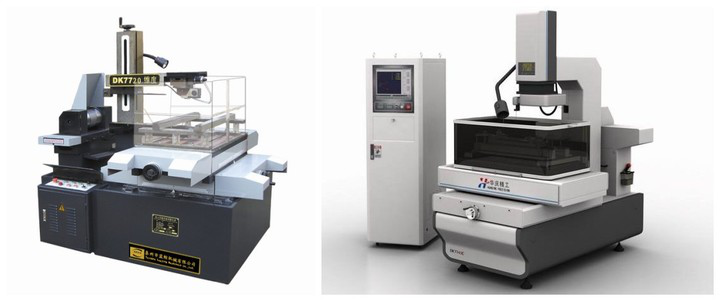
As for the processing equipment of wire cutting, I haven’t had much contact with it, so I haven’t accumulated much in this field and haven’t done a lot of homework. Therefore, I have some limitations in the scope of use in the machinery industry, but it also has its unique existence value, especially for the blanking and processing of some special-shaped parts, However, in view of its low processing efficiency and the vigorous development of laser machine, wire cutting processing equipment is also gradually walking on the edge of the eliminated industry.
In fact, my company has a large number of wire cutting equipment, but because it is actually a blanking process, I don’t pay much attention to this equipment. My overall impression is “dirty, slow and annoying”. Many operators are unwilling to operate this equipment, especially with the vigorous application of various numerical control equipment and the gradual maturity of automation technology, The advantages of this equipment have been a little “gone”. Of course, it will continue to exist within a certain time and scope, which is certainly inevitable, but I also believe that its value will be smaller and smaller.
Personally, I am happy to see the demise of this equipment, because it has no advantages in terms of processing efficiency or working environment.
Note: This article suggests collection. Although there is no innovation in knowledge and it is a compilation of the basic knowledge of some industries, I have done it with great care in the structure and design of the article, as well as the selection and processing of relevant pictures, and described it in combination with the specific practice of the industry. For practitioners in the machinery industry, In particular, the new mechanical technologist has a good reference and reference value.









